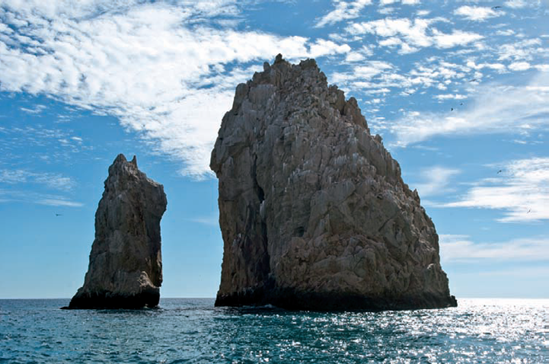Chapter 8. Landscape Photography
You can photograph landscapes in any environment, from the mountains to the deserts and any place in between. When shooting landscapes, there is usually plenty of time to set up the shot; after all, you do not have to worry about the subject moving. In landscape photography, there is no reason not to have everything composed exactly the way you want it. Landscape photography is about patience and waiting for the light to be just right. The positioning of each element in the landscape, using the rule of thirds, using leading lines to control the viewer's eye, and even changing your viewpoint are all covered here.

This image was photographed from the deck of a boat in Cabo San Lucas. I had the boat moved so that I could capture the light striking the rocks in the way I chose, and the clouds would act as leading lines into the image from the top left. Taken at ISO 200, f/11, and 1/500 second.
Composition Considerations
There are times when you can get away with sloppy composition; for example, when shooting your kids playing in the yard, the subject can make a poorly composed image a favorite. However, when it comes to shooting landscapes, the composition is the most important thing.
Rule of thirds
The rule of thirds works wonders for landscape photographs by organizing the elements in your scene and helping to create a balanced composition. The rule of thirds ...
Get Composition Digital Field Guide now with the O’Reilly learning platform.
O’Reilly members experience books, live events, courses curated by job role, and more from O’Reilly and nearly 200 top publishers.

